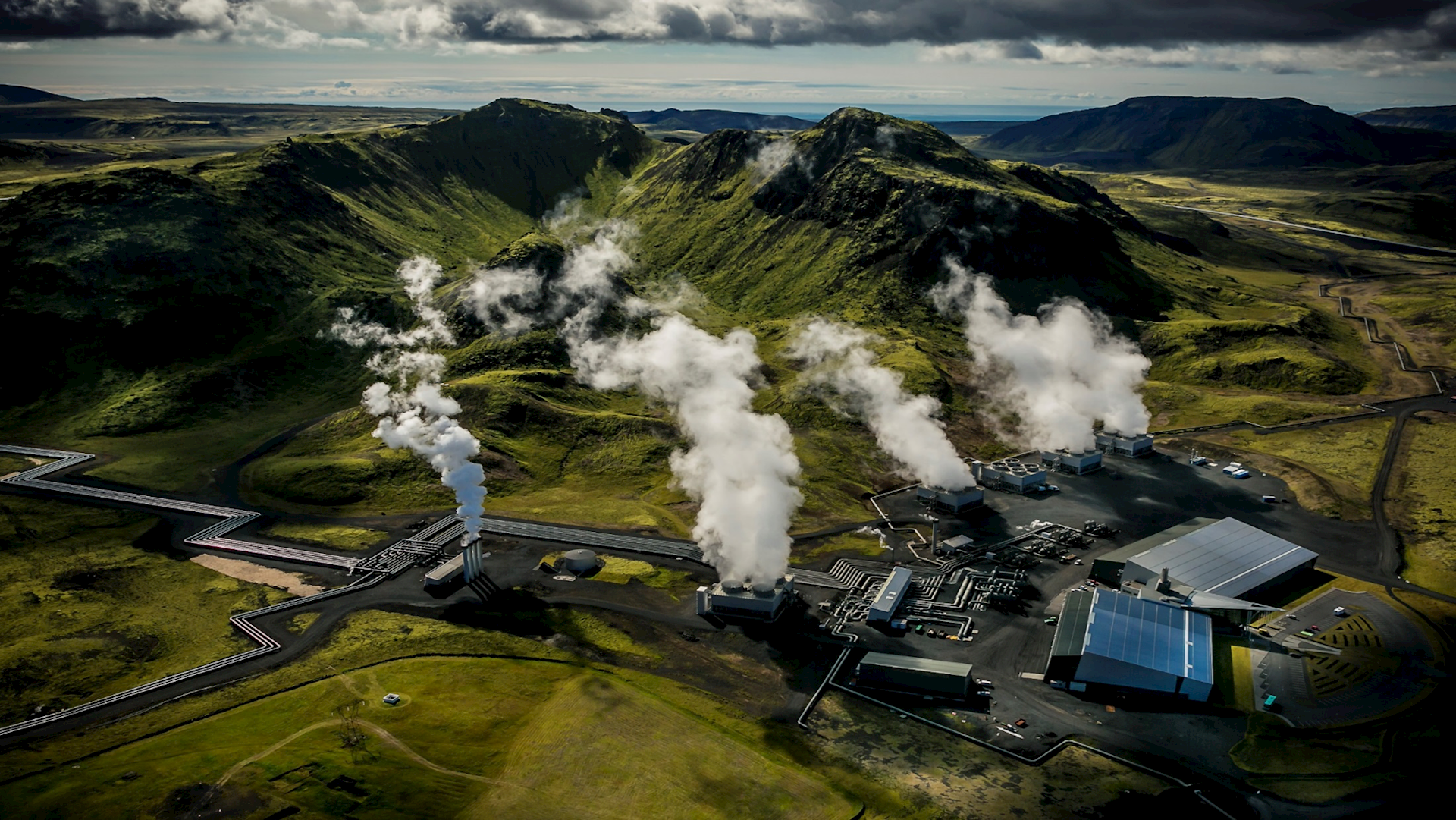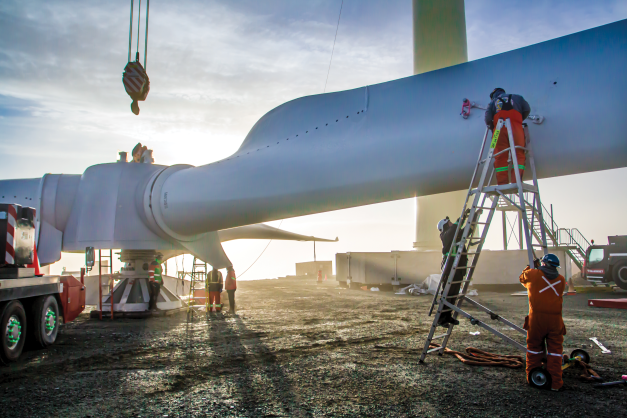In its recent flagship report, The Role of Critical Minerals in Clean Energy Transitions, the International Energy Agency documents the expected needs of different metals and minerals to enable low carbon-emitting technologies to replace existing non-sustainable electrical generation methods. The report shows the importance of nickel (high, medium, low) for some of the clean technologies
Wind and water - Nickel in clean energy

Even small quantities of nickel in an application can make a big difference to successful deployment.
Even a small amount of nickel can be critical in delivering resilience and enabling successful deployment of clean technologies. Take hydro-electric for example. Even though nickel is indicated to be of low importance (low quantity) in hydro-electric, its use is critical in weldability of turbine blades and in the long life of other components used in dam gates. In some applications, we can even say that nickel is essential for these technologies.

All the clean energy technologies use nickel!
While the IEA report discusses only electrical power generation, some other clean technologies result in energy in the form of heat. The production of biofuels is a case in point, relying heavily on the use of nickel in the form of stainless steels. In fact, much of the energy mix requires nickel in one form or another, and all the clean energy technologies use nickel.
Let's take a closer look at what nickel is doing in three of the clean energy technologies: geothermal, hydro-electric and wind power.
Geothermal
Heat from deep within the earth can be used to generate electricity as well as for heating homes and other buildings. The concept is simple – steam or pressurised hot water over about 150°C is brought up in pipes to the surface where it drives turbines to generate electricity and then cools. The now lower temperature water is sent through pipes for district heating systems and subsequently returned to the source to be naturally reheated. One of the main advantages of geothermal is that the energy obtained is reliable and available all the time, unlike solar or wind.
Geothermal energy production today is quite limited, perhaps only 16 GW capacity, limited to places where the water sources are relatively close to the earth’s surface, typically less than three kilometres deep. The capital cost of a geothermal power plant tends to be higher than other sustainable technologies, however the costs can be justified by the continuous operation of the system.

In the power plant there may be as much as a hundred tons of nickel in the alloys used. These materials, all in their correct application, provide corrosion resistance, strength and clean surfaces for excellent heat transfer, resulting in cost-effective service.
The quality of the water or steam varies considerably depending on location. Some of the waters are very corrosive as they contain high amounts of chlorides and hydrogen sulphide. This is where the use of nickel-containing alloys is critical. Some of the installations, such as the Salton Sea project in California, make extensive use of nickel-base alloys like C-22 (N06022), but most others can use lower alloyed materials.
Hellisheiði Power Station
Take for example, the Hellisheiði Power Station in Iceland, near the capital Reykjavik, ranked as the sixth largest geothermal power plant in the world. It produces 303 MW of electricity and 400 MW of thermal energy used to heat homes and businesses, carried by a 19.5 km long pipe to the city. The wells bring up water at a temperature of around 200 °C with a low amount of chloride and some hydrogen sulphide.

The materials used in the system range from typical carbon steel casing alloys through various types of stainless steels to high nickel alloys. Even titanium is needed for certain critical components. Some of the key components where nickel is found are the turbines, condensers, heat exchangers, pumps and piping systems which use, for example, stainless steels Types 630 (S17400), 316L (S31603), various duplex alloys, 6%Mo (S31254) and nickel alloy 625 (N06625).
In the power plant there may be as much as a hundred tons of nickel in the alloys used. These materials, all in their correct application, provide corrosion resistance, strength and clean surfaces for excellent heat transfer, resulting in cost-effective service.
Hydro-electric power
Hydro-electric power is presently the largest source of renewable electricity. Capacity is expected to grow 70 % by 2040, mostly in the Asia Pacific region, according to the IEA. It will remain an important renewable energy source for the future. There will be more plants but in addition, older plants will require refurbishment and efficiency improvements offering the opportunity for current technology to be incorporated for longer life and greater energy production.
Most hydro-electric power systems have dams that feed turbines to generate the electricity. Nickel is used in these systems for some key components and it looks like nickel will play an even greater role in the future.
At the heart of the power plant is the generator, which consists of a turbine (runner) driven by flowing water under pressure, with a moving rotor containing magnets inside a fixed stator with copper wire windings which then produces electricity.
Hydropower : the most durable turbines are made from nickel-containing stainless steel.
Usually, the turbine is made from nickel-containing stainless steel. It needs both corrosion and cavitation resistance. Turbines vary in size but are often very large, and their ability to be welded and be weld-repaired is critical to material selection.
For these reasons, the most durable turbines are made from nickel-containing martensitic and austenitic stainless steels such 410NiMo (UNS S41500), EN 1.4488 (no UNS), Type 304 (S30400) and their cast equivalents. Stators are also large and here the nonmagnetic qualities of nickel-containing austenitic stainless steel is key to their performance, particularly alloys such as XM-19 (S20910).

With increasing water pressures and volumes, other system components can be lowered in weight and increased in durability with nickel. High strength low alloy (HSLA) steels remain a great candidate for future development of penstocks (large diameter pipes that feed water to the turbine). Penstocks can be up to 10 m in diameter. Higher strength steel reduces weight and has the advantage of increasing the internal diameter. Nickel in these alloys promotes martensite formation needed to obtain the high strength. Nickel has the added advantage of improving weldability of the penstock materials. These advantages, lower cost, lower steel usage and improved efficiency, are key to the future of this important renewable sector.
Wind Power
The use of wind to generate energy has accelerated recently to where nearly 750 GW of capacity exists worldwide. The cost of energy from wind turbines has gone down while the size of individual turbines has increased to where 10 MW and larger turbines are being offered today. Larger wind turbines result in lower intensity of material use, meaning less material per MW of energy is used, an important sustainability criterion. Here nickel is also playing a critical role.

Nickel use is most often associated with stainless steels, and in wind turbines, many safety-critical features such as ladders, control panels and fasteners will indeed use stainless steel alloys. But the main use of nickel in wind power will be small quantities to increase the strength and improve the toughness of low alloy steels. Many alloying elements will increase the strength and hardness of steel, but nickel is one of the few that also improves toughness – the ability to absorb mechanical energy without fracturing – which is critical to wind turbine operation.
The gearbox of a turbine contains the most critical moving parts. A gearbox for an 8 MW turbine can weigh 86 tons. If something major fails, replacing parts or even the whole gearbox on a land-based wind turbine is a very costly exercise, but for offshore installations, the costs and downtime can be enormous. Thus, reliability and long life are essential factors in making wind power economically feasible. The weight of the gearbox is also important, as the structure must support the weight of the nacelle, where the gearbox is located, in the strongest of wind conditions. A one kilogram weight reduction in the nacelle can save as much as 10 kg of material in the support structure. Design is critical, but so is alloy selection. Much of the steel in the gearbox today contains nickel, as much as 2 % for certain components. Even higher nickel alloy steels are being suggested as turbine sizes as high as 20 MW are being considered. Components that today contain no nickel may in the future contain about 0.5 %, in order to decrease weight and increase reliability.
Design is critical, but so is alloy selection.
Wind power in the Arctic
Providing electric power and heat to remote sites in northern Canada is always a challenge, especially if there are no roads to the site. Such is the case for the Raglan Mine, a nickel mine owned by Glencore in Nunavik, which encompasses the northern third of the province of Quebec. A large supply of diesel fuel is brought in by sea during a short shipping season. The winters are dark and bitterly cold, so having heat and power is absolutely essential. Wind energy is one of the few potential alternative sources of energy. But can that technology work safely in extreme Arctic conditions including blizzards?

Two wind turbines were constructed and installed in 2014 and 2018, along with a sophisticated energy storage system that includes lithium-ion batteries. Integration of the wind turbine and diesel energy systems was also mandatory. These first steps were very successful, proving the concept, and now studies are underway to potentially install two new 3 MW wind turbines. Each turbine allows savings of over two million litres of diesel annually resulting in the reduction of 3,600 tons of carbon dioxide.
Nickel contributes to the success.
In each wind turbine, about 2,000 kgs of nickel are used. Applications relying on nickel in the nacelle area include bearings, shafts, gears and hydraulic components, and in other areas for fasteners, control cabinet housings and many other components.
This article was first published in our Nickel Magazine VOL 36-2, in September 2021.


